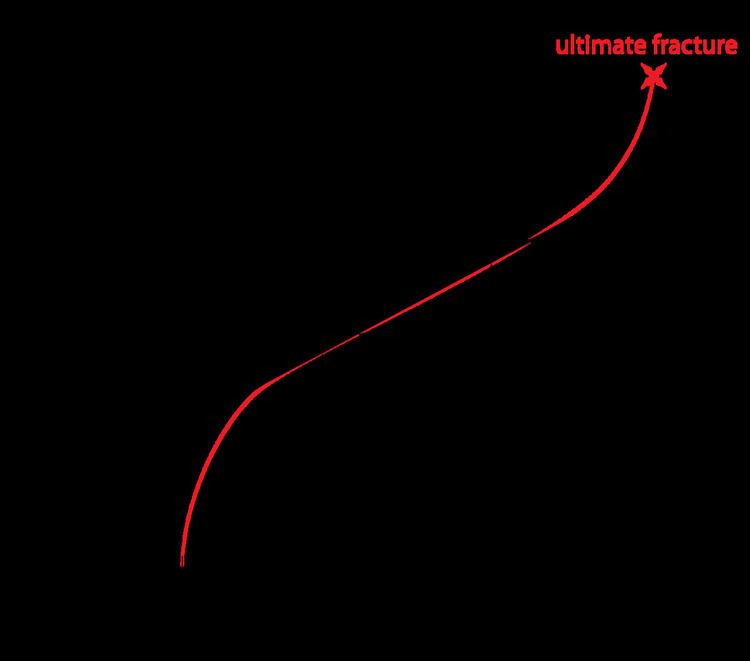 | ||
Paris' law (also known as the Paris-Erdogan law) relates the stress intensity factor range to sub-critical crack growth under a fatigue stress regime. As such, it is the most popular fatigue crack growth model used in materials science and fracture mechanics. The basic formula reads
where a is the crack length and N is the number of load cycles. Thus, the term on the left side, known as the crack growth rate, denotes the infinitesimal crack length growth per increasing number of load cycles. On the right hand side, C and m are material constants, and
where
History and use
The formula was introduced by P.C. Paris in 1961. Being a power law relationship between the crack growth rate during cyclic loading and the range of the stress intensity factor, the Paris law can be visualized as a linear graph on a log-log plot, where the x-axis is denoted by the range of the stress intensity factor and the y-axis is denoted by the crack growth rate.
Paris' law can be used to quantify the residual life (in terms of load cycles) of a specimen given a particular crack size. Defining the stress intensity factor as
where
where
For relatively short cracks, Y can be assumed as independent of a and the differential equation can be solved via separation of variables
and subsequent integration
where
